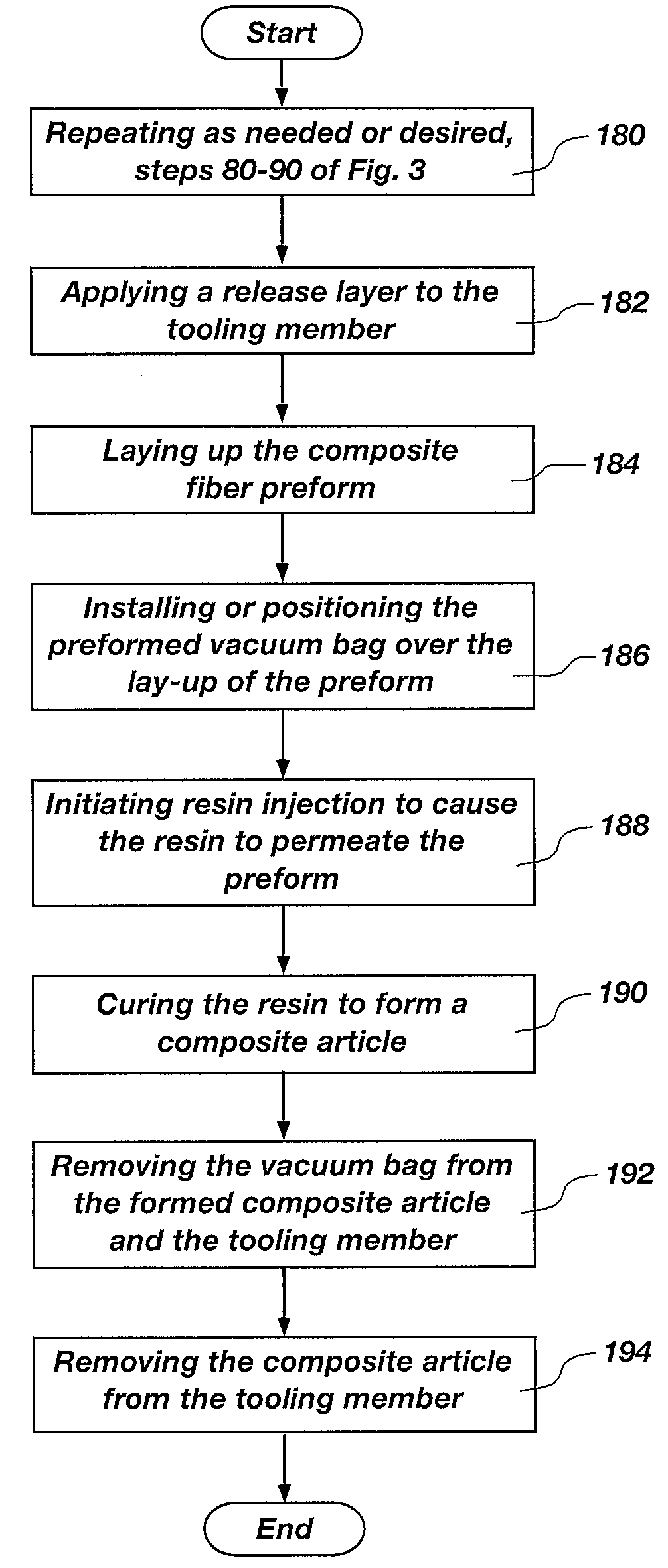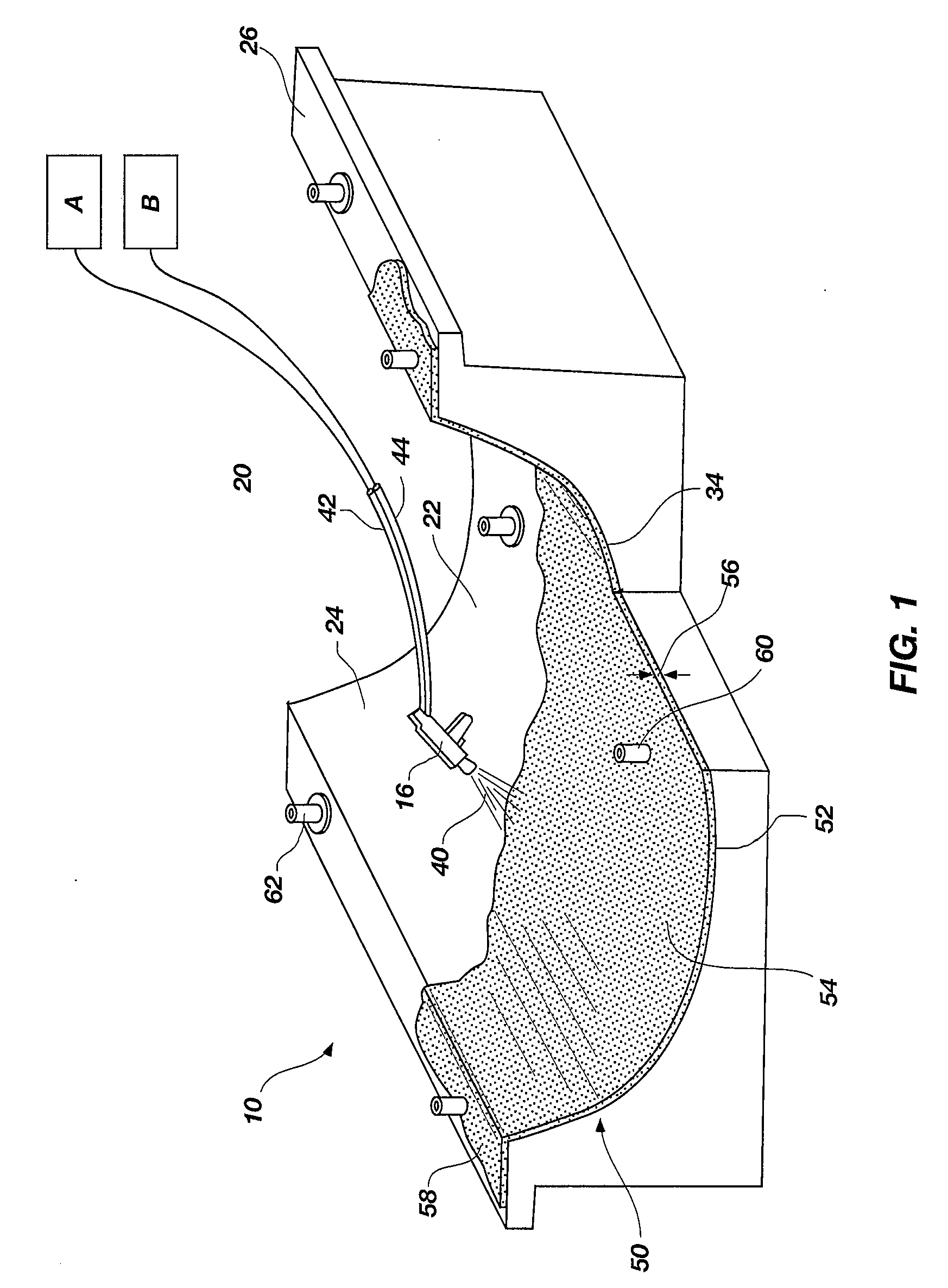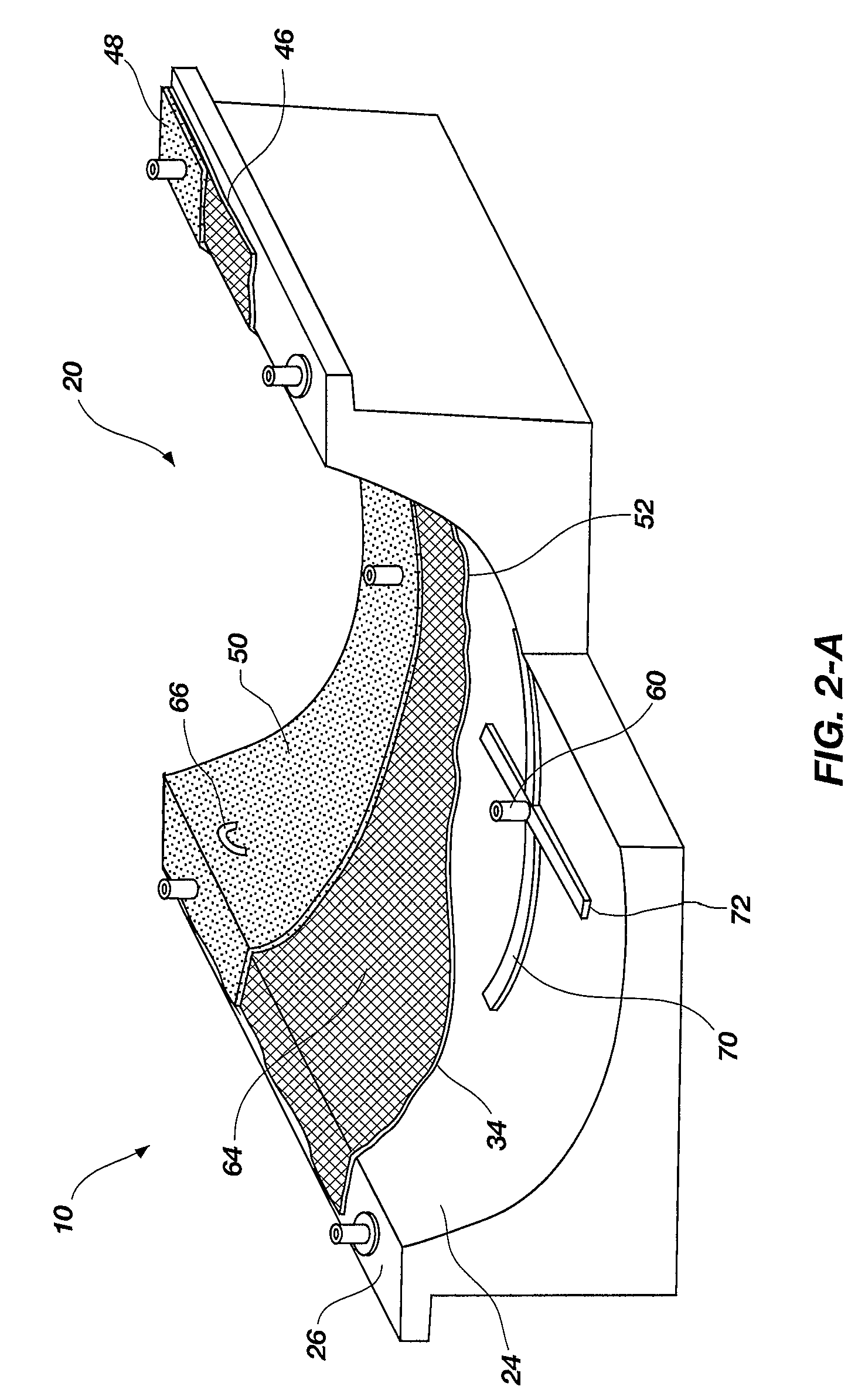Multi-function vacuum bag for composite part manufacture
a vacuum bag and composite part technology, applied in the field of fabrication or manufacture of composite parts, can solve the problems of large amounts of hazardous air pollutants, large size and geometry of parts produced with closed molds, and high cost of matching metal dies
- Summary
- Abstract
- Description
- Claims
- Application Information
AI Technical Summary
Benefits of technology
Problems solved by technology
Method used
Image
Examples
example one
[0123]This prospective example is representative of a bagging system comprising a sprayable, multi-function vacuum bag designed for multi-functional use in composite parts manufacturing. Stated differently, the compositions provided herein allow the multi-function vacuum bag to function as a release, a caul, a breather layer, a vacuum bag, a pliable mold top, etc., each of which can be achieved with the single present invention vacuum bag. As discussed, providing multiple functions allows multiple conventional manufacturing processes to be avoided or eliminated, while producing high quality composite parts. In addition, depending upon the application, the vacuum bag can have multiple life cycles.
[0124]In this example, the multi-function vacuum bag comprises a prepolymer composition made up of a two part polyurea, such as those provided by BaySystems North America, and utilizes a Gusmer spray machine or equivalent for spraying. Specifically, the prepolymer composition contains the fo...
example two
[0138]This prospective example is also representative of a bagging system comprising a sprayable, multi-function vacuum bag designed for multi-functional use in composite parts manufacturing. Stated differently, the compositions provided herein allow the multi-function vacuum bag to function as a release, a caul, a breather layer, a vacuum bag, a pliable mold top, etc., each of which can be achieved with the single present invention vacuum bag. Applications include, but are not limited to autoclave cures, resin infusion cures, prepreg de-bulking and other processes.
[0139]In this example, the multi-function vacuum bag comprises a prepolymer composition made up of a two part polyurea, and utilizes a Gusmer spray machine or equivalent for spraying. Specifically, the prepolymer composition contains the following substances and their respective proportions: an “A” side Polymeric MDI present in an amount by weight about 33% (Ingredients: Diphenylmethane—diisocyanate (MDI), and modified MD...
PUM
| Property | Measurement | Unit |
|---|---|---|
| temperatures | aaaaa | aaaaa |
| temperatures | aaaaa | aaaaa |
| temperatures | aaaaa | aaaaa |
Abstract
Description
Claims
Application Information
 Login to View More
Login to View More - R&D
- Intellectual Property
- Life Sciences
- Materials
- Tech Scout
- Unparalleled Data Quality
- Higher Quality Content
- 60% Fewer Hallucinations
Browse by: Latest US Patents, China's latest patents, Technical Efficacy Thesaurus, Application Domain, Technology Topic, Popular Technical Reports.
© 2025 PatSnap. All rights reserved.Legal|Privacy policy|Modern Slavery Act Transparency Statement|Sitemap|About US| Contact US: help@patsnap.com



